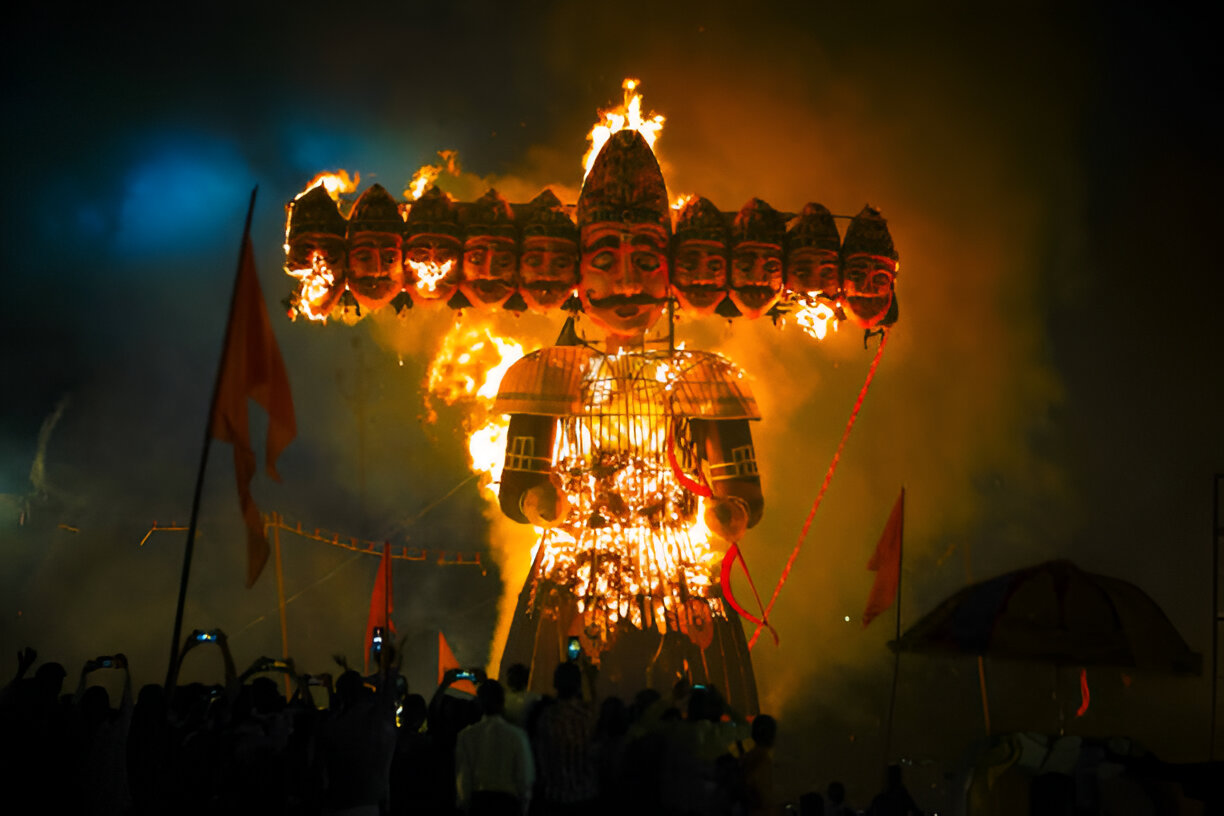The Festival of Triumph
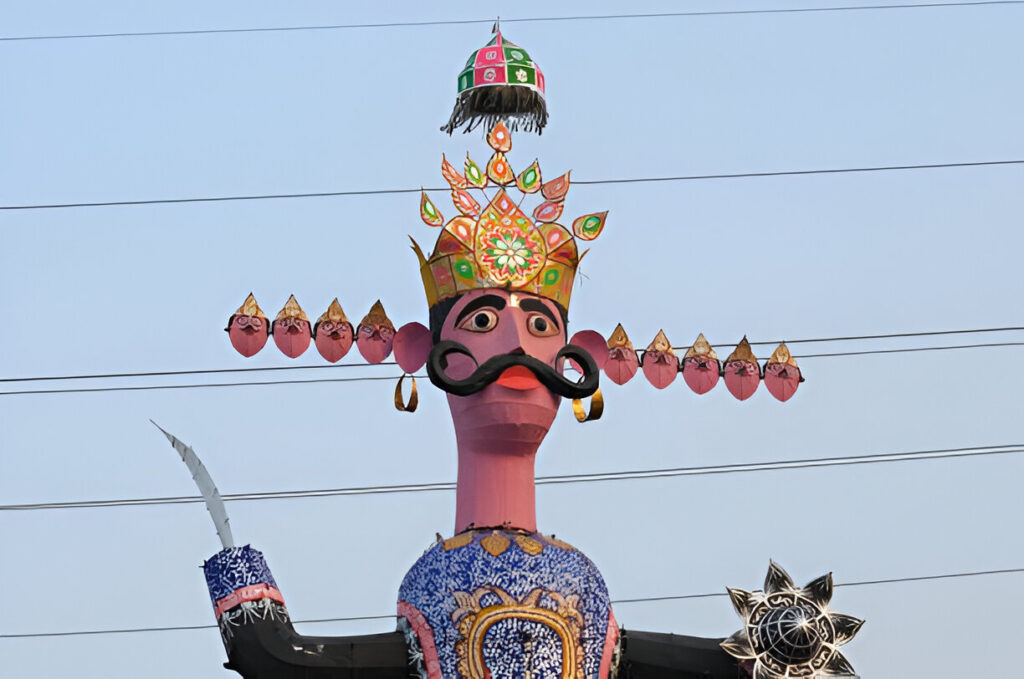
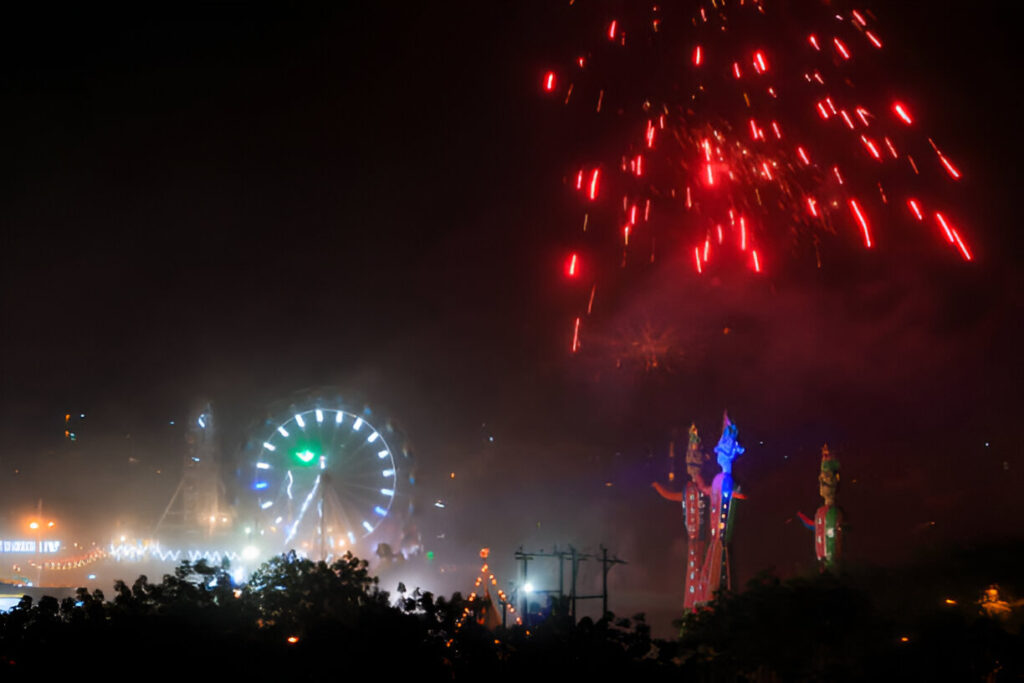
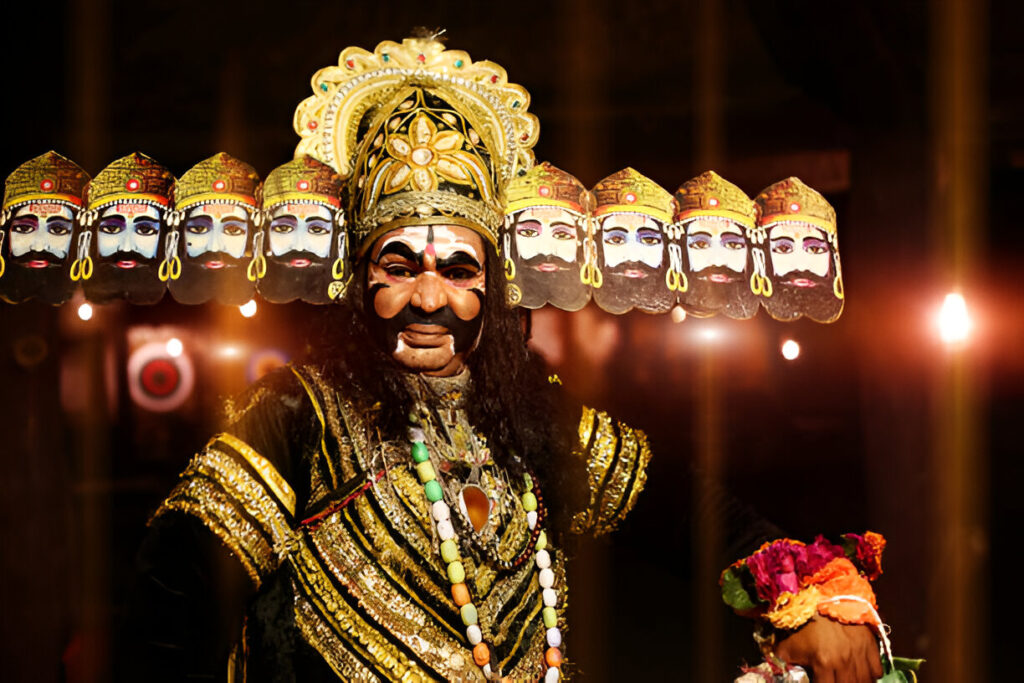
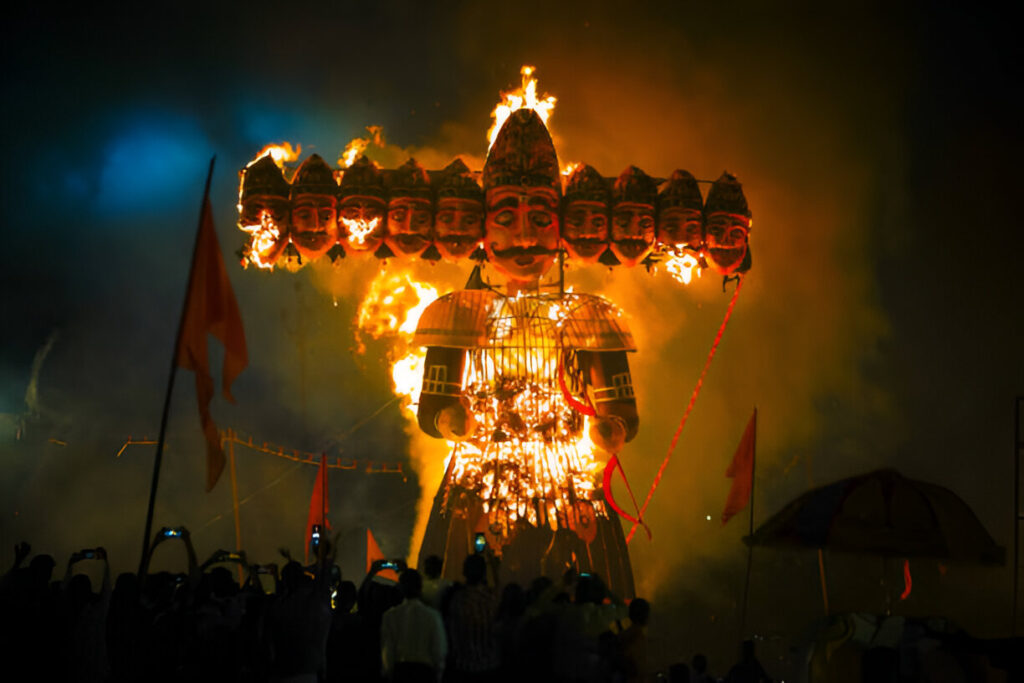
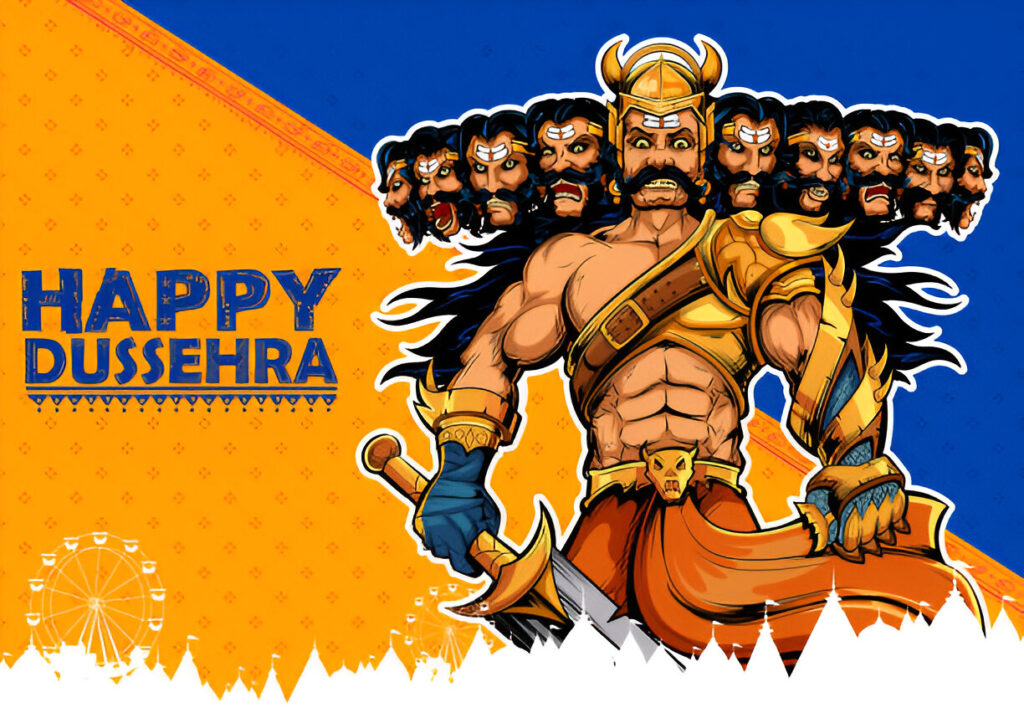
Every year, as the autumn sun begins to soften and the monsoon clouds drift away, India prepares for one of its most vibrant and symbolic festivals — Dussehra, also known as Dasara or Vijayadashami. Streets light up with processions, stages are erected for Ramlila plays, effigies of Ravana, Meghnath, and Kumbhkaran stand tall awaiting flames, and communities come together in celebration of the eternal theme of good conquering evil.
But Dussehra is not just another festival on the Hindu calendar. It is a celebration layered with multiple meanings — a commemoration of Lord Rama’s victory over Ravana, a remembrance of Goddess Durga’s triumph over Mahishasura, and a symbol of the universal truth that righteousness, though often tested, ultimately prevails. Its significance runs deep, not just in Hindu mythology but also in the collective consciousness of India, making it one of the most widely observed festivals across the subcontinent.
The Origins of Dussehra: Ancient Roots of Vijayadashami

To understand why Dussehra is celebrated, one must journey back into the epics that form the backbone of India’s cultural identity. The word “Dussehra” itself comes from the Sanskrit phrase “Dasha Hara”, meaning “removal of ten” — referring to the ten heads of Ravana, the demon king of Lanka, who was defeated by Lord Rama.
In the Ramayana, one of the two great Hindu epics, the festival marks the day when Rama, after years of exile and hardship, rescued his wife Sita from Ravana with the help of Hanuman, Lakshman, and his vanara sena. The burning of Ravana’s effigy during Dussehra symbolizes not just the destruction of a physical enemy but the burning away of arrogance, greed, and evil within the human spirit.
Yet the festival has another equally powerful narrative. In many parts of India, Dussehra coincides with the victory of Goddess Durga over the buffalo demon Mahishasura. According to the Devi Mahatmya, the gods, powerless against Mahishasura, combined their energies to create a warrior goddess — Durga. After a fierce nine-day battle, she slew Mahishasura on the tenth day, making Vijayadashami the day of ultimate triumph.
Thus, Dussehra holds dual mythological roots — one tied to Rama, the embodiment of dharma, and the other to Durga, the divine feminine force.
Why We Celebrate Dussehra: The Triumph of Good over Evil

The question often asked is, why do we celebrate Dussehra every year? The answer lies in the symbolism embedded in the stories. Ravana, with his ten heads, represents not just a single enemy but the ten negative traits of humanity: anger, pride, greed, jealousy, lust, selfishness, injustice, cruelty, ego, and attachment. Burning his effigy is an act of purification, a reminder to let go of these qualities in our own lives.
Similarly, the story of Durga defeating Mahishasura reminds us of the power of Shakti, the feminine energy that sustains creation. Mahishasura was a shape-shifting demon, representing the ever-changing and deceptive nature of evil. Durga’s victory shows that righteousness may struggle but ultimately conquers destructive forces.
Dussehra is not merely about mythology but about life lessons. It is a festival that urges people to fight their inner demons, to embrace truth, courage, and compassion. This is why every year, with unwavering devotion, millions celebrate Vijayadashami as a reaffirmation of faith in justice and morality.
The Ten Days Leading to Dussehra

Dussehra does not stand alone; it is the culmination of Navratri, the nine nights of worship dedicated to the divine feminine. In North India, these nine days are filled with Ramlila performances, dramatic enactments of the Ramayana, leading up to the grand finale on the tenth day when Ravana’s effigy is burned.
In Bengal and eastern India, these days are celebrated as Durga Puja, where elaborately decorated pandals house idols of the goddess slaying Mahishasura. On Vijayadashami, the idols are immersed in rivers and lakes, symbolizing the goddess’s return to her celestial abode.
In the south, the festival is observed with Golu displays in Tamil Nadu, Karnataka, and Andhra Pradesh, where families arrange dolls on steps and invite friends for cultural programs. Mysore, in particular, celebrates Dussehra with regal grandeur, where the Mysore Palace is illuminated with thousands of lights, and a royal procession with decorated elephants parades through the city.
In Maharashtra, families exchange apta leaves, symbolizing gold, as a gesture of prosperity and goodwill. In Gujarat, the days of Navratri are filled with garba and dandiya raas, and on the tenth day, weapons and tools are worshipped as part of Ayudha Puja.
Thus, while the heart of the festival remains the same, the way it is celebrated changes beautifully across India, making it a truly pan-Indian festival.
Ramlila and the Tradition of Ravana Dahan

One of the most iconic aspects of Dussehra in North India is the Ramlila, a dramatic retelling of the Ramayana. These plays, staged in villages and cities alike, often involve hundreds of performers and attract thousands of spectators. The enactments build up to the climax on the tenth day, when huge effigies of Ravana, his brother Kumbhkaran, and his son Meghnath are set aflame amidst fireworks and cheers.
The burning effigy is not merely entertainment; it is a deeply symbolic ritual. As the fire consumes Ravana, it symbolizes the destruction of evil, the triumph of dharma, and the victory of Rama, who stands as the ideal son, husband, and king. For the audience, it is a moment of catharsis, a reminder that no matter how powerful evil appears, it is always defeated in the end.
Durga Puja and Vijayadashami in the East
In West Bengal, Assam, Odisha, and Tripura, Durga Puja transforms Dussehra into a festival of art, devotion, and cultural pride. Pandals rise like palaces, adorned with intricate themes ranging from mythology to social issues. Artists spend months creating idols of Durga, depicting her in the moment of victory over Mahishasura.
For Bengalis, Durga is not just a warrior goddess but also a daughter returning home for a short stay. The immersion of her idol on Vijayadashami is both joyous and sorrowful — joyous because evil has been defeated, and sorrowful because the mother returns to her heavenly abode. Women celebrate with Sindoor Khela, smearing each other with vermillion, symbolizing strength and marital bliss.
Durga Puja adds another dimension to Dussehra — one of cultural grandeur, artistic brilliance, and community bonding.
Mysore Dasara: The Royal Celebration of Karnataka

In Karnataka, especially in Mysore, Dussehra is known as Dasara and is celebrated with unmatched regal splendor. The Mysore Palace becomes the epicenter of festivities, decorated with thousands of lights that turn it into a glowing jewel at night. A grand procession, called Jamboo Savari, takes place on Vijayadashami, where the idol of Goddess Chamundeshwari (an avatar of Durga) is placed on a golden howdah atop a decorated elephant.
The Mysore Dasara is not only a religious event but also a cultural showcase, with music, dance, wrestling competitions, and exhibitions. It reflects the heritage of the Wodeyar dynasty, which started the tradition centuries ago.
Ayudha Puja: Worship of Tools and Knowledge
In southern states, Dussehra includes the practice of Ayudha Puja, where tools, books, and instruments are cleaned, decorated, and worshipped. Farmers worship plows, artisans worship their tools, students worship their books, and professionals honor their instruments of work. The practice acknowledges the divine presence in everything that aids livelihood and reminds people to respect the tools that sustain their lives.
Philosophical Significance of Dussehra
Beyond mythology and rituals, Dussehra holds a deeper philosophical meaning. Ravana’s ten heads symbolize ten human flaws, and burning them is a reminder to conquer anger, ego, greed, and attachment within ourselves. Durga’s battle with Mahishasura represents the inner fight between higher consciousness and lower desires. Vijayadashami becomes a day not just of outward celebration but of inward reflection, where individuals renew their commitment to righteousness, courage, and truth.
Dussehra in Modern Times
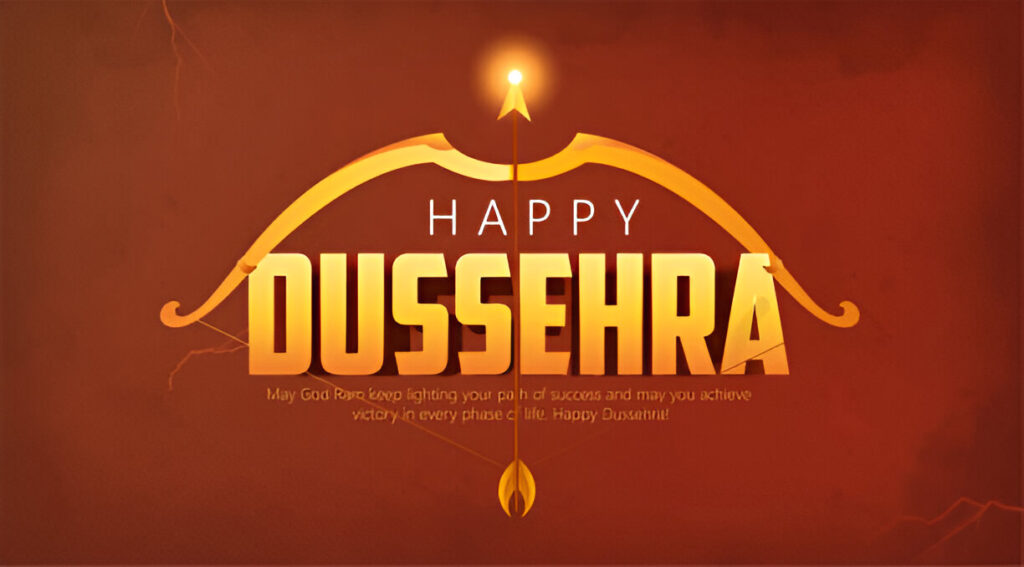
In contemporary India, Dussehra continues to thrive as a festival that unites people across regions and religions. Even in a world dominated by technology, the age-old practices of Ramlila, Durga Puja, and Ravana Dahan continue to draw crowds. The festival also carries economic significance, boosting businesses, artisans, and tourism.
Abroad, Indian communities celebrate Dussehra with equal enthusiasm, from the United States to the United Kingdom, turning it into a global festival of Indian culture.
The Eternal Message of Vijayadashami
Dussehra, or Vijayadashami, is more than a festival. It is a story, a philosophy, and a reminder that goodness always prevails. Whether one sees Rama defeating Ravana, or Durga slaying Mahishasura, the essence is the same: evil, however strong, cannot outlast truth and justice.
As effigies burn, idols immerse, and lights brighten the night, the message echoes across generations — victory may take time, but it is inevitable for those who walk the path of righteousness. This is why Dussehra remains timeless, not just as a festival but as a universal celebration of hope, courage, and moral triumph.

